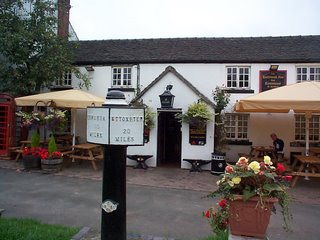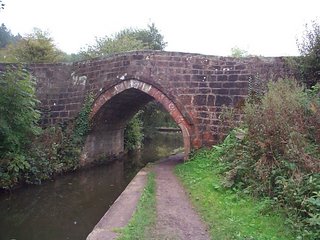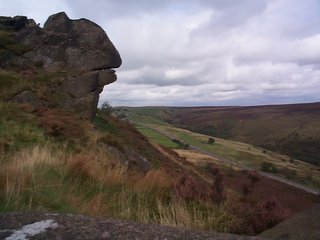Took a couple of trips up to "the valley" in mid-August, both using Alton as a starting point. On the first trip, I headed off down Saltersford Lane; an old pack-horse road with an obvious purpose. This was excellent walking; a clear path between stone walls with no stroppy livestock. Unfortunately, it peters out a bit as it reaches a field, overlooking the river where a Salters Bridge apparently once stood. When the Uttoxeter Canal was dug, a Saltersford or Saltersfield Lane Bridge was provided, but the railway company seems not to have bothered. Thus, the modern path veers south towards Denstone. The original line appears to have been a farm crossing on the railway and a remnant of a hedge suggests a line to the river, but nothing much else is visible.
Just because I haven't spotted it doesn't mean there isn't something there, though. At Crumpwood Weir, a little further back up the valley, is a loop of the Uttoxeter Canal that
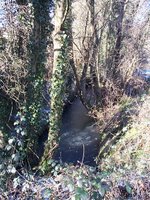
originally took boats through the river. This wasn't much use to the railway, which is why it's still there. On two previous visits, I had noticed a line of stones in the undergrowth, next a modern road, that runs across the line of the canal. I had wondered, initially, whether this might be the remains of a lock, but had concluded that it was, probably, just a wall. On this, my third visit, it suddenly became blindingly obvious to me that there was a great big water-filled stretch of canal leading up to this location and that there were really two lines of stones. Clearly, a lock, and, probably, Carringtons or Weir Lock, that lowered the canal to river level for the crossing. Pushing through the undergrowth for a better look just rammed it home; I'd missed something quite obvious that had stared me in the face. This was only the start.
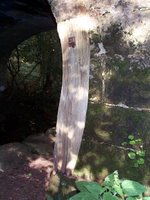
A short distance up the valley from the old lock, is an old bridge, called Seventy Bridge, which is so obvious that even I found it at the first attempt; its on the Ordinance Survey map, for a start. On my recent visit, there, I noticed that there is a plank of wood attached to it, where the towing path passes under. There is rope damage to the stonework behind it. The penny finally dropped. The plank is held in place by a bolt,
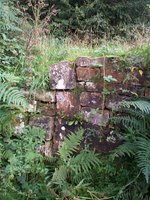
exactly the same as a bolt sticking out of the remains of Morris's Bridge, further up the valley. I had wondered what the bolt on Morris's Bridge was for but had completely failed to take any interest in this much-more-obvious feature on Seventy Bridge. Mystery solved; some kind of rope damage protection. All I need, now, is to find a bridge on the Caldon Canal or the main line of the Trent and Mersey, with a similar device in place, at a location I've known for years, to feel totally stupid.
Absence of evidence is not evidence of absence.
